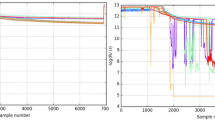Abstract
The cost and quality of a multichip assembly is highly dependentupon the cost and quality of the incoming die. In the case of a baredie assembly, it is often highly desirable to use either Known Good Die(KGD) or die that have been burned-in and tested to the same level ofquality and reliability as their packaged die equivalents. However,performing full bare die burn-in and test may not always becost-effective. This paper examines the question of whether it isalways necessary to use KGD to produce a cost-effective multichipmodule (MCM) of acceptable quality. A process-flow based cost modelis used to compare the cost and quality of MCMs assembled with KGD toMCMs assembled with die that have received wafer-level test only. Inaddition to test effectiveness at the wafer, die, and module level,factors that are considered include die complexity (size and I/O), number of die per MCM, the cost of producing the KGD, andrework costs and effectiveness. The cost model captures inputs fromwafer fabrication through MCM assembly and rework. Monte Carlosimulation is used to account for uncertainty in the input data.The resulting sensitivity analyses give final MCM cost and quality asa function of the various factors for both KGD and die that havereceived wafer-level test only.
Similar content being viewed by others
References
K. Torku and C. Radke, “Quality Level and Fault Coverage for Multichip Modules,” 20th Design Automation Conference, 1983, pp. 201–206.
M. Tegethoff and T. Chen, “Defects, Fault Coverage, Yield and Cost, in Board Manufacturing,” International Test Conference, 1994, pp. 539–547.
Z. Sekulic, “The MCM Dilemma,” Advanced Packaging Journal, pp. 42–45, Summer 1992.
J. Hagge and R. Wagner, “High Yield Assembly of Multichip Modules Through Known Good IC's and Effective Test Strategies,” Proceedings of the IEEE, Dec. 1992, Vol. 80, No.12, pp. 1965–1994.
Larry Gilg, et al., “Infrastructure of Known Good Die,” Final Report of the DARPA Funded KGD Phase 1 Project, Microelectronics and Computer Technology Corporation, 1993.
C.F. Murphy, “Known Good Die Selection Tradeoffs: A Cost Model,” Proceedings of the ISHM International Conf. on Multichip Modules, April 94, pp. 261–265.
M. Abadir, A. Parikh, L. Bal, P. Sandborn, and K. Drake, “Analyzing Multichip Module Testing Strategies,” IEEE Design and Test of Computers, pp. 40–52, Spring 1994.
M. Abadir, A. Parikh, L. Bal, P. Sandborn, and C. Murphy, “High Level Test Economics Advisor (Hi-TEA),” Journal of Electronic Testing (JETTA), Vol. 5, pp. 195–206, 1994.
B.T. Murphy, “Cost-Size Optima of Monolithic Integrated Circuits,” Proc. IEEE, Vol. 52, pp. 1527–1545, 1964.
T.W. Williams and N.C. Brown, “Defect Level As a Function of Fault Coverage,” IEEE Trans. on Computers, Vol. C-30, pp. 987–988, Dec. 1981.
V. Agrawal, S. Seth, and P. Agrawal, “Fault Coverage Requirements in Production of Testing of LSI Circuits,” IEEE Journal of Solid-State Circuits, pp. 57–61, Feb. 1982.
Author information
Authors and Affiliations
Rights and permissions
About this article
Cite this article
Murphy, C.F., Abadir, M.S. & Sandborn, P.A. Economic Analysis of Test Process Flows for Multichip Modules Using Known Good Die. Journal of Electronic Testing 10, 151–166 (1997). https://doi.org/10.1023/A:1008239018655
Issue Date:
DOI: https://doi.org/10.1023/A:1008239018655




